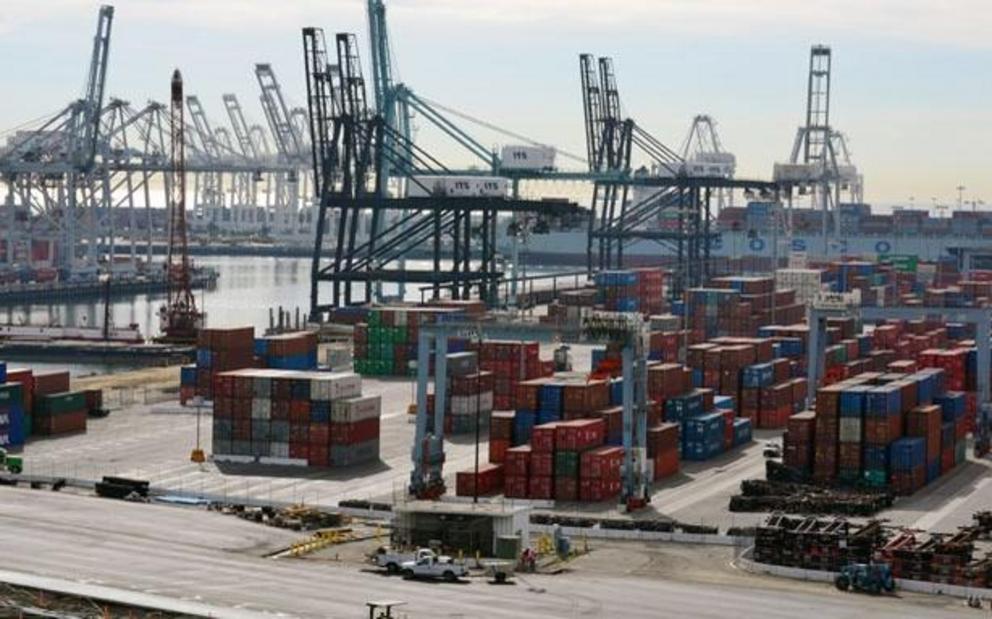Global shipping - where have all the ships gone? Signs of a recession
Where Have All The Ships Gone? Signs Of A Recession
The images of the west coast ports packed with ships and pictures of them stacked up just offshore have vanished from the evening news. So, where have they gone, and does this mean the supply chain is fixed? It appears that the post-covid shipping slug is over but this does not mean that the supply chain is fixed or there will not be shortages.
As of Sept. 21, 2021, there were 132 cargo ships at the ports of Los Angeles and Long Beach. Dozens of container ships were anchored or adrift off the coast. As of Aug 30, 2022, that number has dwindled to only 8 ships waiting off Southern California. The end of goods backing up in ports on the west coast is a sign we are moving on. Danielle DiMartino Booth recently stated, "We have never seen the collapse of the magnitude that we are witnessing in imports. That is always a tell-tale sign that you are already looking through the rear-view mirror at recession."
In a video released on September 6, 2022, Sal Mercogliano, a maritime historian at Campbell University and former merchant mariner delved into the reduction of ships currently sitting off the west coast. This includes the important Port of Los Angeles and the implications for the flow of cargo and goods as well as freight rates. It now seems that for several reasons, the international supply chain crisis that impacted U.S. logistics firms, retailers, and consumers could continue for a long time.
Most of the disruption in the flow of goods may be in the rear-view mirror, however, a slew of new economic destabilizing factors are beginning to emerge. These will result in a bumpy ride for consumers going forward. Those issues most on our radar are centered around energy whether it is gas or electricity. Others are being talked about but being largely shrugged off until the shelves are empty or prices go through the roof deal with food.
It has also become a problem that in the post-covid era many people simply lack the desire to return to work. This is playing havoc within the labor market. It seems sitting on their bottoms at home for a year has become addictive. The reality is employers are now finding they are often having to pay more for less productive workers.This is one of the factors driving inflation.
Swinging back to the idea ports are no longer backed up, has to do with the flow of goods. First, we had few goods in the pipeline, then more than a lot, and now it has slipped back a bit below normal because many companies had ordered more than they needed when they were unable to get goods. This has resulted in some companies and retailers now finding they are overstocked and up to their ears in inventory. Another problem is much of this inventory does not meet their current needs.
In short, the supply chain is still messed up but in a different way. Things are not back to normal and the system is not running like a fine-oiled machine. An example of this surfaced this week when Ford warned that it expects to see an extra $1 billion in costs in Q3 due to both "inflation and supply chain issues". Ford is currently suffering through parts shortages that have affected between 40,000 and 45,000 vehicles.
According to The Detroit News, The legacy auto manufacturer at the end of the third quarter expects to have a 'higher-than-planned' number of vehicles assembled but awaiting parts due to supply shortages. The models affected are primarily "high margin trucks and SUVs." This means these vehicles haven't been able to be shipped to dealers. Ford is just one in the long list of companies in this situation and someone will have to pay for what is happening.
Companies are forced to pass the costs of supply chain problems on to customers, shareholders, or both. We should not be under the illusion things will straighten out anytime soon. The problems we face now have created new problems down the road. We should also add into this the effects of bad weather on crops and livestock as well as prices of energy and oil soaring from war and geopolitical issues. Expect some of these factors to result in additional empty shelves, rising prices, and more shortages for months to come.
Footnote; Here is the ink to the video mentioned earlier in the article; https://www.youtube.com/watch?v=cHTYEAVqr6g Another post you may find interesting appeared on this site back in April, it looked into how the geopolitical issues we face with Russia and China could result in even more supply chain problems. that link is; https://brucewilds.blogspot.com/2022/04/the-broken-supply-chain-russia-and.html
(Republishing of this article welcomed with reference to Bruce Wilds/AdvancingTime Blog)

